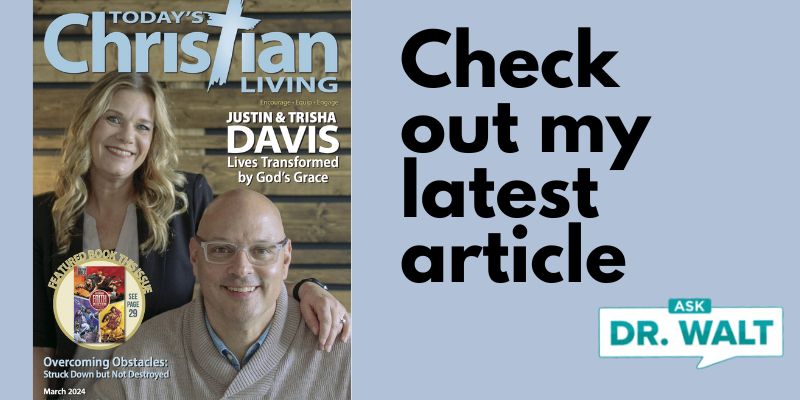Could your breastfed or premature infant be iron deficient?
January 17, 2011Lower-Priced Resveratrol Supplements Pass Quality Tests While Some Higher-Priced Brands Flunk
January 19, 2011Arthritis patients may gain physical and emotional relief from the ancient Chinese art of Tai Chi, finds a new study, the largest of its kind. This study just confirms the finds of previous smaller studies, but raises the question: “Just because something works, does it always mean it’s right to use it?”
Let me explain — first starting with a review of what Tai Chi is that comes from my book, Alternative Medicine: The options, the claims, the evidence, how to choose wisely:

-
Tai Chi, or Tai Chi Chuan, literally means “supreme ultimate power” and is part of traditional Chinese medicine. There are five major styles, with the yang form most commonly practiced in the West. As with Qigong, the purpose of the practice is to restore a balanced flow of chi and thereby promote health.
-
Most Westerners are familiar with Tai Chi as a martial art consisting of meditation, breathing exercises, and slow, graceful movements. It comes in short and long versions, lasting about ten or thirty minutes, respectively. Each session is composed of a series of specific postures combined into one long exercise. Many of these developed from watching animal and bird movements, as reflected in their names: “white crane spreads wings,” “golden rooster stands on one leg,” and “ride the tiger.” Practicing outdoors is said to be better because it allows universal chi in the earth to rise up through one’s feet to replenish the person’s own chi.
-
The martial arts aspect of Tai Chi is little understood by practitioners of other forms of karate such as Tae Kwon Do, Kempo, and the like. The movements are so slow and smooth that they are comfortable for the elderly, which is not the case with other forms of martial arts that involve strikes and blocks.
-
However, a skilled Tai Chi practitioner can speed up the movements to serve as a form of self-defense. Many Westerners are also unaware of, or unconcerned about, the spiritual aspects of Tai Chi.
Does it work? The answer is yes, for some indications. However, as I write in the book, “Overall, the evidence is weak that Tai Chi is beneficial psychologically, with no evidence that it is more beneficial than other exercise programs.”
Nevertheless, the spiritual issues surround Tai Chi may be of concern. In the book, I write, “The same cautions as expressed with all other life energy therapies apply to Tai Chi. The religious nature and goals of Eastern therapies should not be forgotten. In attempting to introduce people to the universal energy field — and help them become unified with the Universal Consciousness — these practices can be the door to the occult realm.”
Our conclusions about Tai Chi are:
- Tai Chi is frequently offered in the West as both an innocuous exercise regimen and a martial art, often with no religious aspects discussed with students.
- However, more serious practitioners are often committed followers of Eastern religions and may teach that these beliefs must be embraced to properly practice Tai Chi or experience its benefits. Thus, while there may be some general health benefits, Tai Chi may also bring spiritual harm.
Our overall conclusion about Tai Chi is this:
- Exercise programs have been designed for people at every point on the fitness scale and with a variety of preexisting ailments. We see no reason to adopt one immersed in religious connotations when nonspiritual alternatives are widely available.
For those interested in Tai Chi only as a form of exercise, here are the details on the new study from HealthDay News:
Patients with osteoarthritis, rheumatoid arthritis and fibromyalgia felt better and moved more easily after taking twice-weekly classes in Tai Chi, a system of meditative exercise, researchers found.
“It reduced pain, stiffness and fatigue, and improved their balance,” said study lead author Leigh F. Callahan, an associate professor of medicine at the University of North Carolina at Chapel Hill School of Medicine.
Smaller studies have also linked Tai Chi to similar benefits for people with arthritis, but colleagues had questioned the applicability of the findings to a larger population.
In this study, in addition to evidence of mild to moderate relief from Tai Chi, participants reported gaining a better sense of physical stability, Callahan said. They were able to extend their reach while maintaining their balance, she said — an important feat for people with arthritis.
Tai Chi, a form of mind-body exercise, originated as a martial art in China. It utilizes slow, gentle movements along with deep breathing and relaxation to build strength and flexibility.
Tai Chi has “become a lot more mainstream than it was even two to three years ago,” said Callahan, who is also a member of UNC’s Thurston Arthritis Research Center. “We’ve got people embracing it and being very interested in it.”
If Tai Chi is proven to reduce arthritis symptoms, it could become a cheap and fairly simple treatment for the various forms of the condition. Typically, Tai Chi classes are inexpensive or free, Callahan said, and in this study, people with arthritis could participate even if they preferred to sit rather than stand.
In the study, the researchers randomly assigned 247 people — almost all female and white, and diagnosed with various types of arthritis — to attend one-hour, twice-weekly, Tai Chi classes for two months, or to take the Tai Chi classes at a later time. The classes were designed by the Arthritis Foundation. The participants were from 20 sites in New Jersey and North Carolina, and they had to be able to move without assistance to be eligible.
The researchers took reports from all the participants on their levels of pain, fatigue, stiffness and physical function before the study began and at the eight-week evaluation period. They were also asked to rate themselves on their overall health, their psychological state (such as perceived helplessness), and how well they could perform daily activities.
The participants were also tested on their strength and physical performance by using a timed chair stand (which evaluates lower leg strength), their walking gait (both normal and fast) and two balance tests (a single leg stand and a reach test.)
Callahan said she couldn’t yet quantify the improvements by percentage, but the available data suggest that participants felt mildly to moderately better and improved their sense of well-being. They also slept better, she said.
Tai Chi appears to provide both physical and mental benefits, she added. “The whole program is designed to help people be relaxed and think about their breathing, think about their movements. Everything is slow and deliberate and purposeful.”
The findings of the study — which was funded in part by the Arthritis Foundation and the U.S. Centers for Disease Control and Prevention — were released at the annual scientific meeting of the American College of Rheumatology in Atlanta.
Myeong Soo Lee, a principal researcher with the Korea Institute of Oriental Medicine in Daejeon, South Korea, said the study is “rigorous” but has limitations. For one thing, it didn’t break down the benefits by arthritis type, she noted.
There’s evidence to support Tai Chi to reduce the symptoms of knee arthritis, but not for rheumatoid arthritis, said Lee, who has studied Tai Chi and arthritis.
While the findings may add weight to the case for Tai Chi as a treatment for some forms of arthritis, Lee said more information is needed before it could become a blanket prescription.
Since the study was presented at a conference, its findings and conclusions should be regarded as preliminary until it is published in a peer-reviewed medical journal.




0 Comments
Hi Dr. Walt:
Lots of folks are concerned about the spiritual aspects of martial arts, especially the “soft” styles such as Tai Chi. In the United States, we’re really good at using the parts of something we like and cheerfully discarding the baggage, and martial arts is no exception.
I take a “spoil the Egyptians” approach to this — as Christians we are free to examine something and derive what is good or true from it, no matter what its origin or intended purpose, just as the Hebrews built the Tabernacle from gold and other materials taken from the Egyptians.
If you’re a smart shopper you can easily find a Tai Chi practitioner in the US who focus on the technical, physical and medical aspects without necessarily teaching or believing the spiritual portion (in much the same way you can derive benefit from acupuncture without needing to believe the “chi” portion of it).
More on the issue in an article I wrote for Focus:
http://www.boundless.org/2005/articles/a0001662.cfm
Greg, great to hear from you. Thanks for the post and the link to your article. It’s well done. Walt